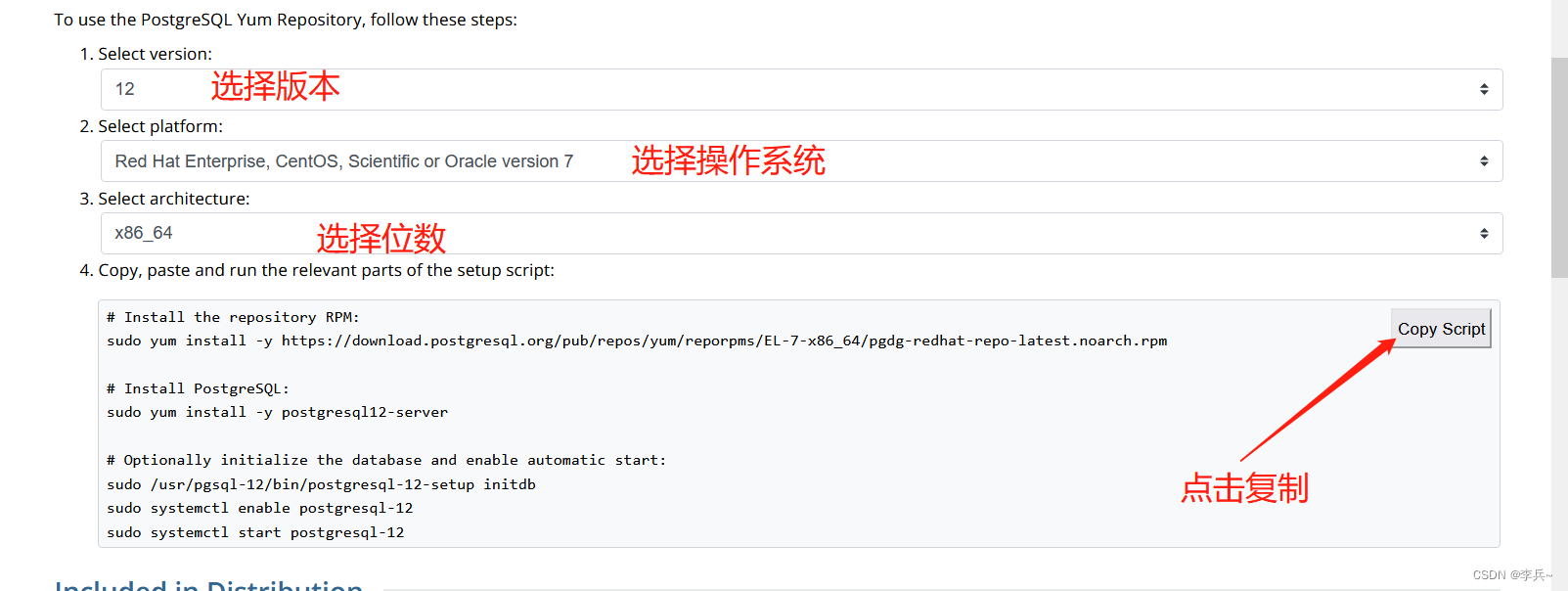

To start the PostgreSQL service, run: systemctl start postgresql PostgreSQL data is typically found /var/lib/pgsql/data directory. * Initialized, logs are in /var/lib/pgsql/initdb_postgresql.log Output: * Initializing database in '/var/lib/pgsql/data'
Pgdg redhat repo install#
# PostgreSQL 10ĭnf install -y installing PostgreSQL, initialize the database before using it for the first time. You can install another version with postgresql:stream in the dnf command.
Install PostgreSQL using the dnf command. Postgresql 13 client, server PostgreSQL server and client module Postgresql 12 client, server PostgreSQL server and client module Postgresql 10 client, server PostgreSQL server and client module Postgresql 9.6 client, server PostgreSQL server and client module PostgreSQL 13, 12, 10, and 9.6 are available from the AppStream repository. For this demo, I am installing PostgreSQL 14. Then, install the PostgreSQL server using the dnf command by mentioning its version postgresql-server. Add PostgreSQL Repositoryįirst, install the PostgreSQL repository configuration on your system, as shown below. Packages provided by PostgreSQL is always fresh and supported by the PostgreSQL community. PostgreSQL Community offers PostgreSQL packages for CentOS 8 / Rocky Linux 8 / RHEL 8. Install PostgreSQL from Official PostgreSQL Repository
Pgdg redhat repo how to#
In this post, we will see how to install PostgreSQL on CentOS 8 / Rocky Linux 8 / RHEL 8. PostgreSQL is developed by the PGDG (PostgreSQL Global Development Group) and released under the PostgreSQL License, a free and open-source software.
Pgdg redhat repo mac os#
That’s all from this post, please do post your queries and feedback on below comments section.PostgreSQL is a free, open-source object-relational database management system (ORDBMS) available for various platforms, including Linux, Microsoft Windows, and Mac OS X. Perfect, above output confirms that postgres user and database is secure now.

This time it should prompt you to enter password first, $ su - postgres Let’s try to switch to postgres user and connect to database. $ psql -c "ALTER USER postgres WITH PASSWORD ‘xxxxxxxxxxx' " Now to secure database, set password to postgres user using passwd command. 5) Securing PostgreSQL 15 Databaseīy default, postgresql database is not secure, one can easily switch to postgres user without any password and start using psql as shown below: To verify its service status, run $ sudo systemctl status postgresql-15Ībove output shows that postgresql service is up and running. Run the following systemctl commands to start and enable postgresql 15 service.

To initialize PostgreSQL 15 initdb database, run $ sudo /usr/pgsql-15/bin/postgresql-15-setup initdb 3) Initialize PostgreSQL Database (initdb) Now, let initialize its database in the next step. $ psql -VĪbove command’s output shows PostgreSQL 15.1 is installed on the system. Once postgresql and it’s dependencies are installed, verify its version using following psql command. $ sudo dnf install postgresql15-server -y In step 1, we have already configured PostgreSQL 15 package repository, so to install it, run the beneath dnf command. So, let’s first enable its DNF/yum package repository using following dnf command. PostgreSQL 15 is not available in the default package repositories of RHEL 9. 1) Enable PostgreSQL 15 Package Repository


 0 kommentar(er)
0 kommentar(er)
